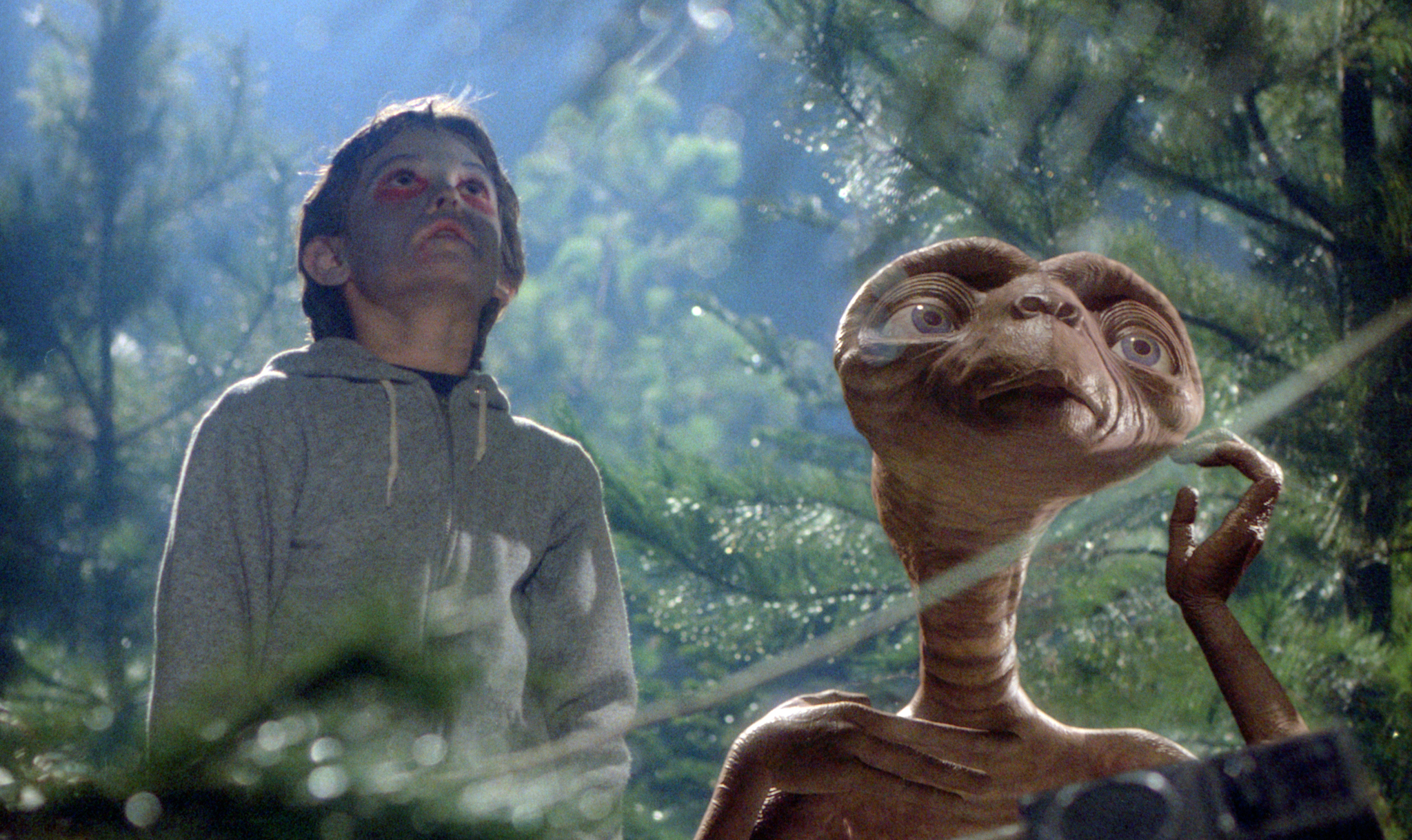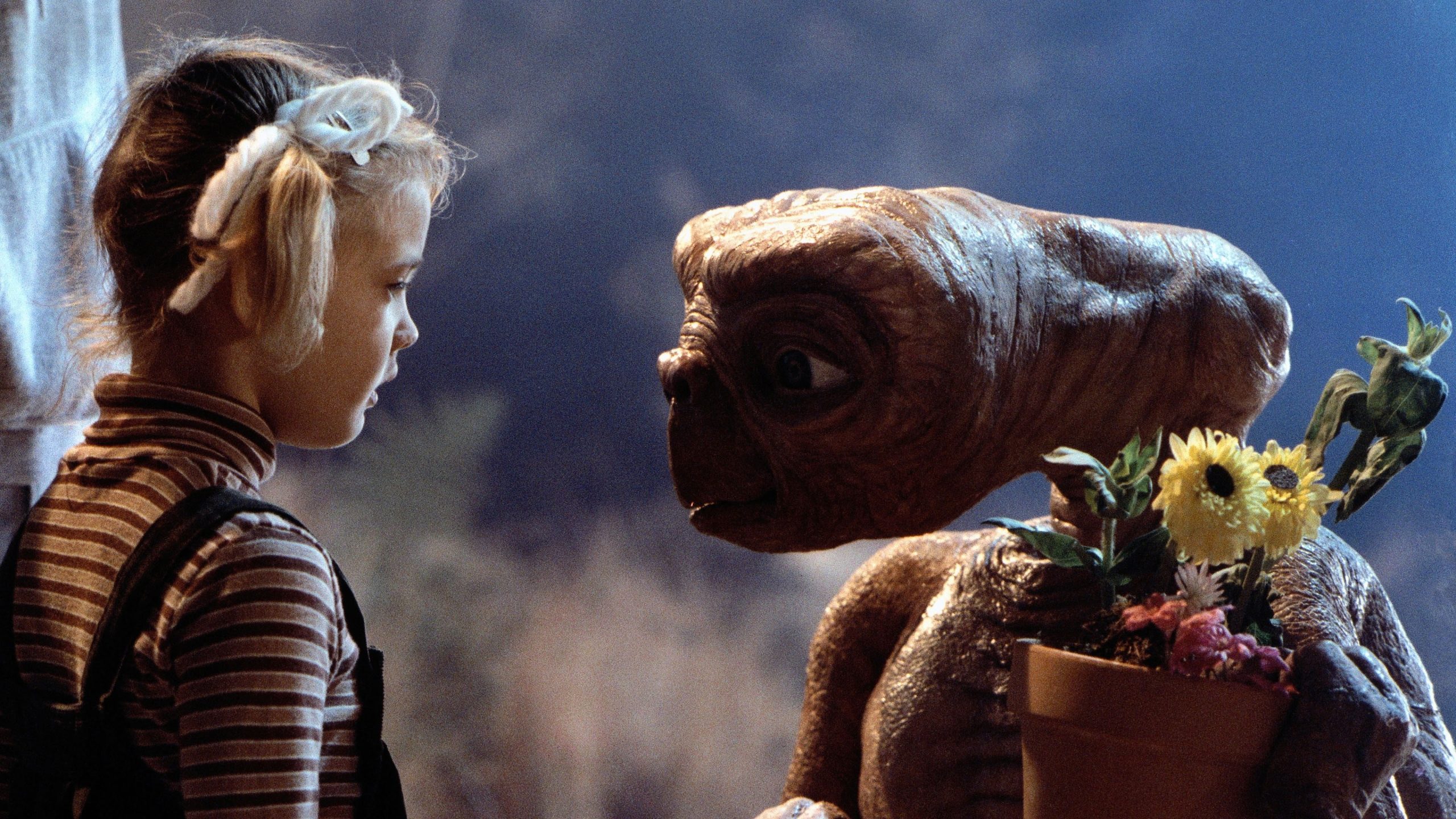🎬 E.T. the Extra-Terrestrial (1982)

Review of E.T. the Extra-Terrestrial (1982)
Introduction and Background
Steven Spielberg’s E.T. the Extra-Terrestrial (1982) is one of the most beloved films in cinematic history, a touching science fiction adventure that captures the wonder and innocence of childhood. The story follows a young boy named Elliott (Henry Thomas) who discovers and befriends an alien stranded on Earth. As Elliott and his siblings work to keep E.T. hidden from government authorities, they form a deep emotional bond with the creature, leading to one of the most heartwarming tales of friendship ever told. Released to critical and commercial success, E.T. became the highest-grossing film of its time and remains a cultural landmark. With Spielberg’s masterful direction, John Williams’ iconic score, and groundbreaking special effects, the film continues to resonate with audiences of all ages.
Story and Themes
At its core, E.T. is a story about love, empathy, and the power of human connection. Elliott, a lonely child dealing with his parents’ recent divorce, finds companionship and purpose through his friendship with E.T. The film explores themes of childhood wonder, loss, and the fear of growing up, all wrapped in a fantastical narrative that remains deeply personal. Unlike many sci-fi films that focus on intergalactic warfare or technological advancement, E.T. emphasizes emotion and humanity, showing the alien not as a threat but as a vulnerable being in need of care. The government agents, portrayed as looming figures for much of the film, represent the adult world’s lack of understanding and willingness to accept the unknown. The iconic sequence of Elliott and E.T. flying across the moon on a bicycle encapsulates the film’s sense of magic and possibility, making it one of the most unforgettable moments in cinema history.

Characters and Performances
The film boasts remarkable performances, particularly from its young cast. Henry Thomas delivers an emotionally rich performance as Elliott, capturing the character’s loneliness, determination, and deep sense of love for his extraterrestrial friend. Drew Barrymore, in one of her earliest roles as Elliott’s younger sister Gertie, brings a natural charm and humor to the film. Robert MacNaughton as Michael, Elliott’s older brother, provides a realistic portrayal of sibling dynamics, growing from a dismissive teenager to a supportive ally. The puppetry and animatronics used to bring E.T. to life remain impressive, giving the character a unique presence that feels both otherworldly and deeply relatable. Spielberg’s direction allows for genuine moments of connection, ensuring that the relationships between the characters feel authentic and emotionally powerful.
Cinematography, Effects, and Legacy
Spielberg’s collaboration with cinematographer Allen Daviau results in a visually stunning film that enhances its storybook-like quality. The use of warm lighting, fog, and carefully composed shots makes E.T.’s world feel both intimate and magical. John Williams’ legendary score, particularly the uplifting theme that accompanies the flying bicycle scene, elevates the film’s emotional impact. The special effects, particularly the practical work used to create E.T., remain impressive even by today’s standards. E.T.’s legacy is vast, influencing generations of filmmakers and shaping the way Hollywood approaches family-friendly sci-fi. The film’s themes of acceptance and friendship continue to be relevant, making it a timeless classic that still brings audiences to tears. Even decades after its release, E.T. the Extra-Terrestrial remains a benchmark for heartfelt storytelling, proving that great cinema is defined not by spectacle alone, but by the emotions it evokes in its viewers.











